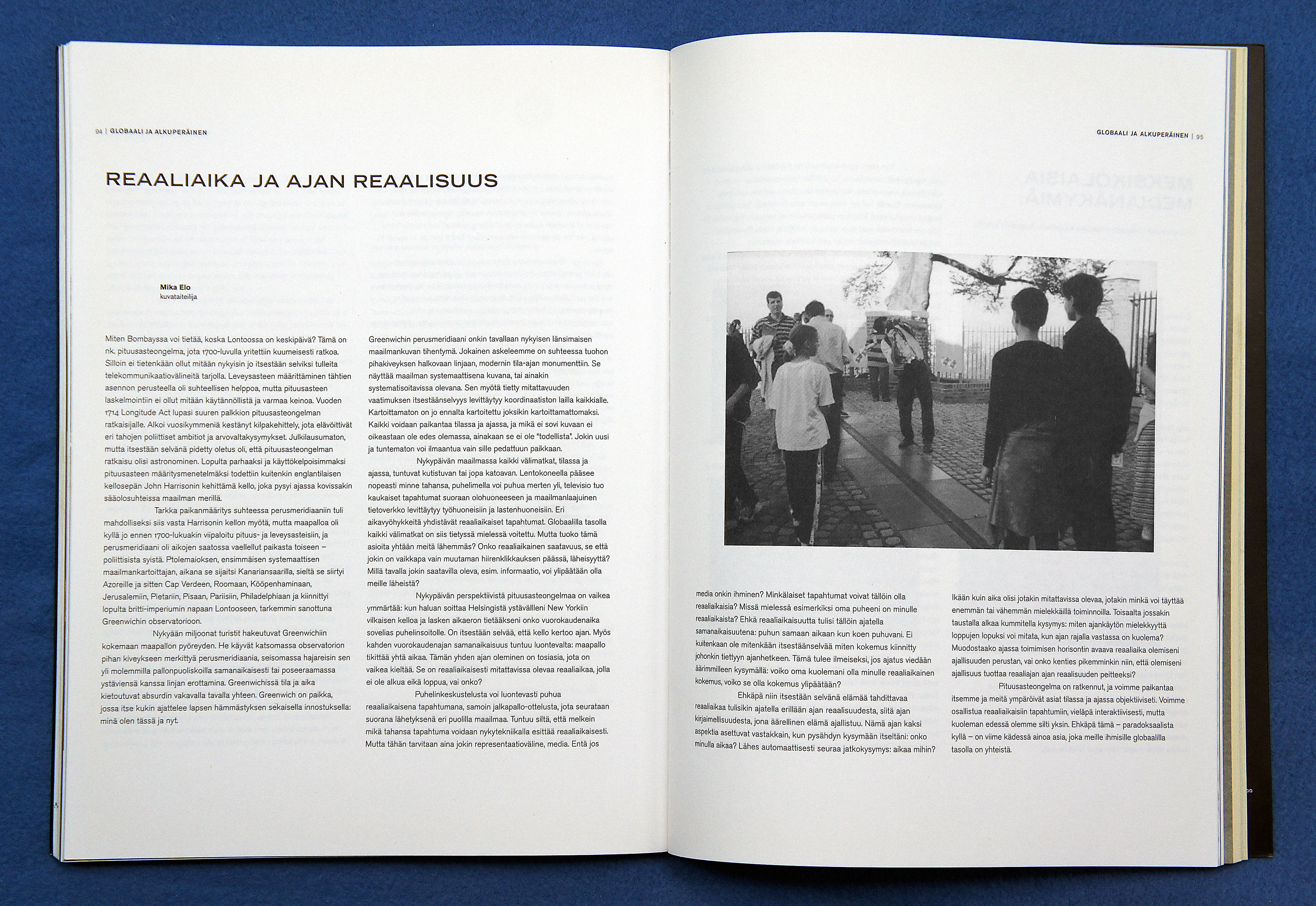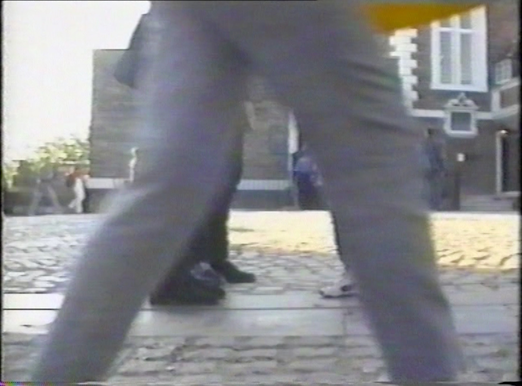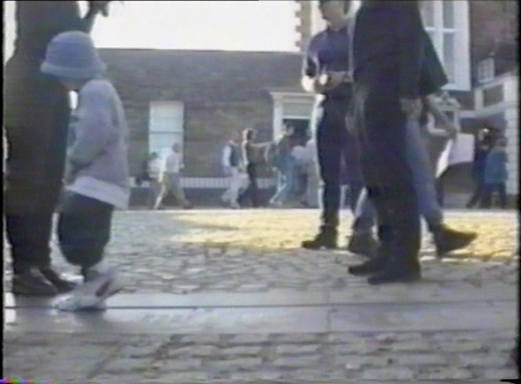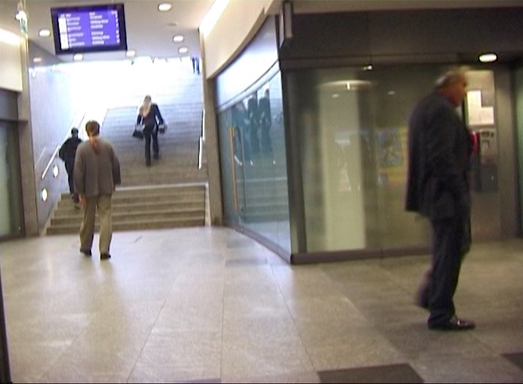Especially one detail in Longitude + Solitude (1997) strikes me today: The only cut in the second part of the video (top left) and the ending of the whole piece (bottom left) find their timing in accordance with human pace. Feet touching the ground mark the finite space-time of the video clip. Within the horizon of Longitude + Solitude these cuts as well as the video transitions and the disjointed soundtrack of the first part of the video obviously reflect the discursively recognizable thematic anchor of the work: the paradoxical intersection of physical and mental time zones epitomized by people photographing each other and themselves while standing on the longitude line marked in the pavement at Greenwich observatorium.
I cannot avoid paying attention to the fact that a similar logic reappears in the ending of the introductory part of Muistiinpanoja / Notes (1993–2017) (right) where the cut it is even accentuated through a short moment of freezing.
This kind of recognizable formal elements – perhaps we can call them gestures – circulate in our cultural imagery and punctuate the flow of images. One might consider them mannerisms or even clichés, but one should also notice that clichés appear against the backdrop of their gestural reverse, their "negative image", as Elissa Marder has pointed out with regard to Baudelaire's poetry and its photographic structure highlighted by Walter Benjamin.* These recognizable, even worn-out, gestural elements – a foot touching the ground, a fleeting eye contact, indexical traces of the body, recurring words and objects – enact cuts that have the effect of letting previously unrelated traits surface on the same plain. With regard to the afterlife of the ensemble of works studied here these cuts appear as "agential cuts", to use a term familiar from Karen Barad's writings.* That is to say that they incorporate a possibility of a point of view, which always implies a reduction of complexity. They introduce a boundary that can be used as the starting point for tracing the exteriority of a work from within the work. Works are in this respect comparable to what Barad calls "phenomena": "ontologically primitive relations – relations without preexisting relata", something that needs to be produced in and through a specific material-conceptual setup. Agential cuts enact decisive shifts within phenomena; they let relata-within-phenomena emerge.*
Perhaps the most original aspect of Barad's agential realism is the idea of the materiality of concepts that she adopts from Niels Bohr. According to Barad, Bohr insists on a strict interdependency of the specific material arrangements of experimental settings and the conceptual delimitation of the phenomena these experiments are supposed to enable by capturing, measuring and defining. It is not possible to cut conceptual differentiations off from their material articulation; concepts are entangled in "specific physical arrangements".*
It is a pity that Barad's own presentation of highly interesting entanglements of quantum physics and cultural theory in Meeting the Universe Halfway does not reach the level of precision necessary for a philosophically productive engagement in conceptual differentiations. Her argumentation style is exhaustingly repetitive and rather axiomatic and most of the book reads more like a manifesto than critical discussion. This is certainly a side effect of her diffractive method that seems to be more suitable for outlining general patterns than for dissecting details. Barad adopts the notion of diffraction from Donna Haraway who considers it a productive alternative to the "well-worn metaphor of reflection"; it invites us from the logic of fixed mirroring positions to relations of "more subtle vision".* Barad explicitly links the metaphor of diffraction to the wave-behaviour of particles and sees in it a valuable starting point for a methodology that is "attuned to the entanglement of the apparatuses of production".* Unfortunately, she is obviously not interested in fine-tuning her method with regard to verbal articulations. I will come back to the question of presentation in the allegorical epilogue.
Since I use the notion of diffraction in the abstract of this exposition, I owe some kind of explication of my understanding of the term. For me, the main point of using the term is to refer to the multi-faceted interferences of gestural elements in the ensemble of works discussed here. Clearly, something like Haraway's "more subtle vision" is needed when the interferences of verbal and non-verbal articulations are traced. Conceptual reflection limited to verbal discourse is simply not enough. Diffraction refers thus to the general mode of this exposition as a material-discursive arrangement aiming at producing parallel effects in several registers.
As points of entanglement, the cuts highlighted in Longitude+Solitude and Muistiinpanoja/Notes demonstrate, for their part, that these works are ultimately less separate entities than moments of punctuation in an incessant movement of thought. As dividing lines outlining the shape and marking the impetus of these works this kind of cuts are gestural, which means that they are iterative moments of articulation, they are dynamic joints holding together the disparate. They are edges that delimit the possible directions of sense, and by doing this, they "radically rework the relations of joining and disjoining"*.






